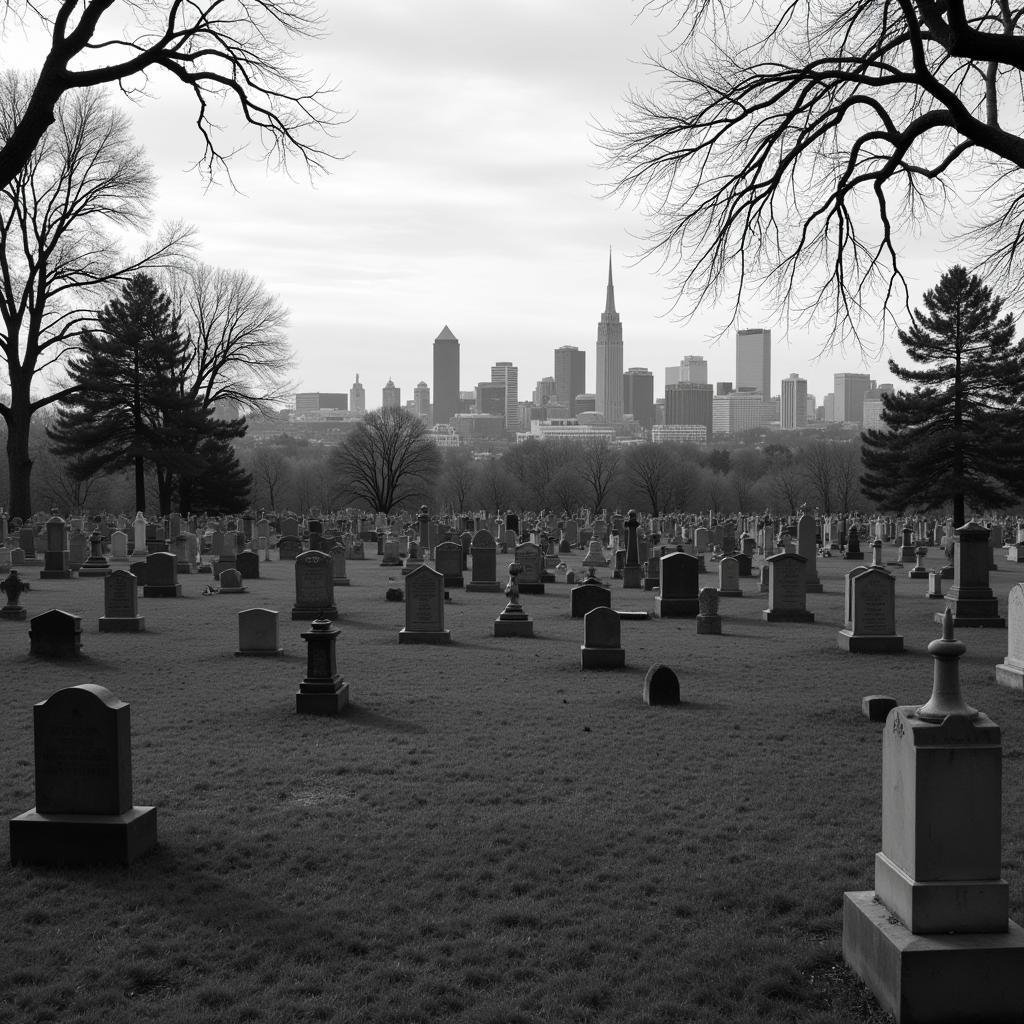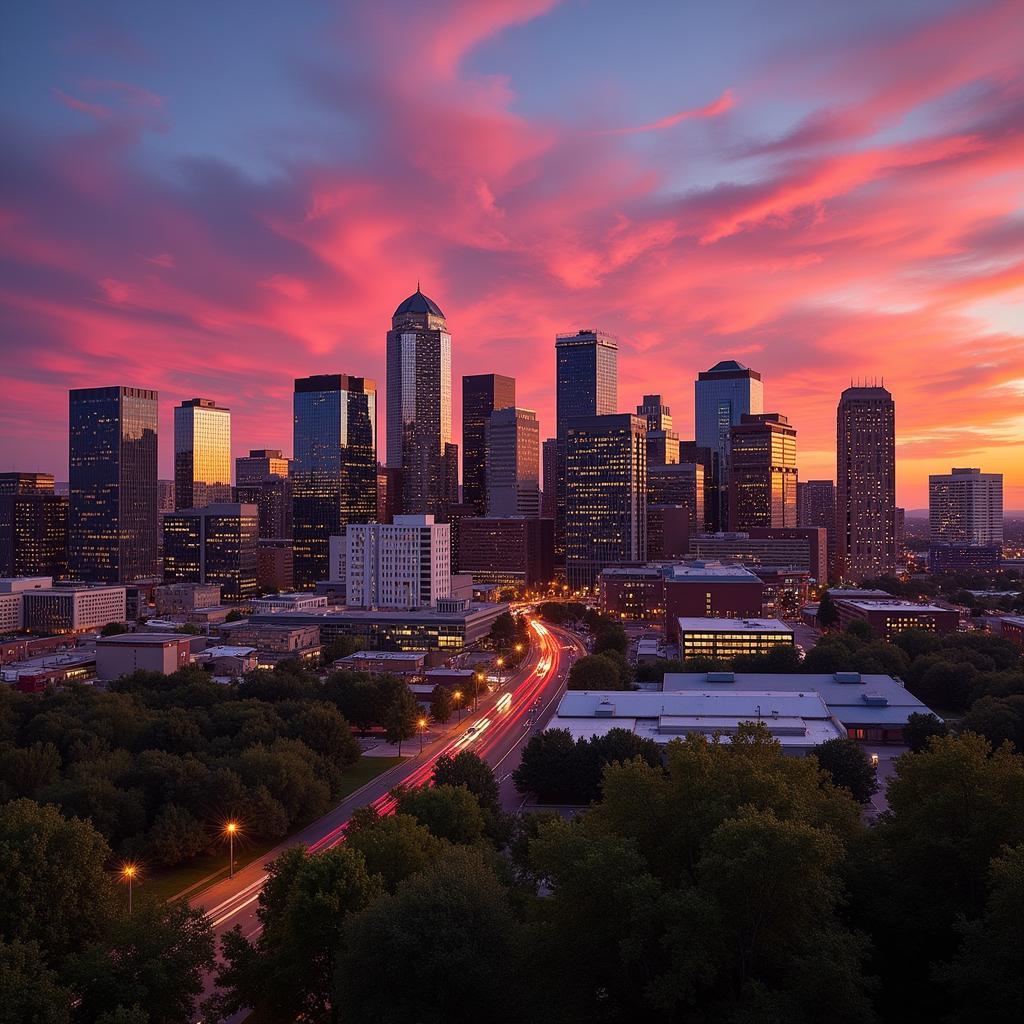Exploring the Myth: City of the Dead Denver
October 17, 2024Denver, a vibrant city nestled in the foothills of the Rocky Mountains, is known for its breathtaking scenery, thriving arts and culture scene, and outdoor adventures. But amidst the bustling city life, whispers of a darker side linger – a “City of the Dead” hidden in plain sight. This article delves into the origins of this intriguing phrase, separating fact from fiction and uncovering the stories that have fueled this urban legend.
Unveiling the Truth Behind “City of the Dead” Denver
While the term “City of the Dead” might conjure images of abandoned buildings and forgotten cemeteries, the reality in Denver is far less eerie. The phrase itself seems to stem from a combination of historical events and imaginative storytelling, leading to a fascinating blend of truth and exaggeration.
 Historic Graveyards in Denver
Historic Graveyards in Denver
Denver’s Historical Ties to Mortality
Like many cities established in the 19th century, Denver faced its share of hardships that contributed to a higher mortality rate. Disease outbreaks, mining accidents, and the dangers of frontier life all played a role in shaping the city’s early years. These events, while tragic, are not unique to Denver and don’t necessarily justify the “City of the Dead” label.
However, certain historical narratives might have contributed to the moniker. One such narrative revolves around the cholera epidemic that swept through the American West in the mid-1800s. While records indicate that Denver did experience cholera cases, it wasn’t as severely affected as other cities.
The Role of Cemeteries in Perpetuating the Myth
Denver boasts several historic cemeteries, some dating back to the city’s founding. These cemeteries, with their weathered headstones and serene landscapes, serve as poignant reminders of the city’s past and the lives lived within its boundaries.
One cemetery, in particular, often finds itself at the center of the “City of the Dead” discussions – Cheesman Park. This popular park, known for its sprawling lawns and panoramic city views, was once home to Denver’s first city cemetery. In the late 1800s, the city decided to relocate the cemetery and create a park. The process, however, was marred by controversy as not all remains were properly removed. This historical tidbit has fueled numerous ghost stories and urban legends, solidifying Cheesman Park’s place in the “City of the Dead” narrative.
Separating Fact from Folklore
While historical events and the presence of cemeteries might have sparked the “City of the Dead” nickname, it’s essential to remember that these stories are often amplified and embellished through word of mouth.
“The ‘City of the Dead’ idea is a classic example of how a city’s history can become intertwined with folklore,” explains local historian Dr. Emily Carter. “While Denver certainly experienced hardship in its early days, it’s important to look beyond the sensationalized stories and understand the nuances of the past.”
Exploring Denver’s Rich History and Vibrant Present
Instead of focusing on the macabre, visitors and residents alike can explore the numerous historical sites and museums that paint a more accurate picture of Denver’s past. The city’s vibrant cultural scene, thriving arts community, and abundance of outdoor activities offer a stark contrast to the “City of the Dead” image.
 Denver's Vibrant Skyline at Sunset
Denver's Vibrant Skyline at Sunset
Denver’s history is undoubtedly fascinating, and understanding its nuances allows for a more complete appreciation of the city’s evolution.
In conclusion, while the phrase “City of the Dead” might pique curiosity, it’s crucial to approach such labels with a critical eye. Denver’s history, like any city’s, is a tapestry woven with both triumph and tragedy. By exploring the city’s past and present, we gain a richer understanding of its identity and appreciate the vibrant metropolis it has become.
FAQ
1. Are there any haunted places in Denver?
Denver has its share of ghost stories and locations rumored to be haunted, often stemming from its history. However, whether you believe in such tales is a matter of personal belief.
2. Is it disrespectful to visit Cheesman Park knowing its history?
Not at all. Cheesman Park is a beautiful public space enjoyed by many. Acknowledging its history as a former cemetery shows respect for the past while appreciating the park’s present-day purpose.
3. What are some other nicknames for Denver?
Denver is often referred to as the “Mile High City” due to its elevation being one mile above sea level. It’s also known as the “Queen City of the Plains” due to its location on the edge of the Great Plains.
4. Where can I learn more about Denver’s history?
Denver has several excellent museums and historical sites. The History Colorado Center, the Molly Brown House Museum, and the Black American West Museum are great places to start.
5. Is Denver a safe city to visit?
Like any major city, Denver has its share of crime. However, it’s generally considered a safe city for visitors and residents. As always, it’s essential to be aware of your surroundings and take necessary precautions.
For any assistance or inquiries, please contact us:
Phone Number: 0963418788
Email: [email protected]
Address: 2M4H+PMH, Phường Nghĩa Thành, Gia Nghĩa, Đắk Nông, Việt Nam
Our dedicated customer support team is available 24/7 to assist you.